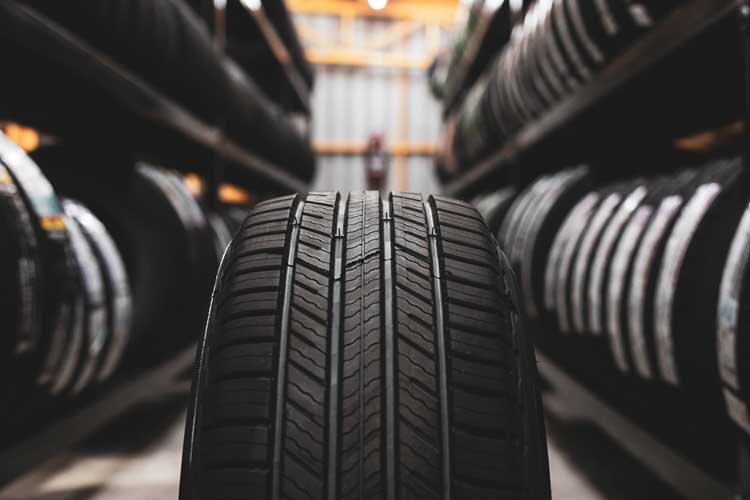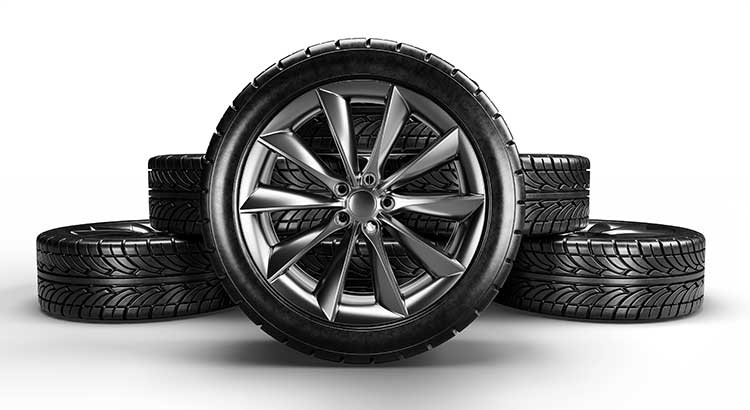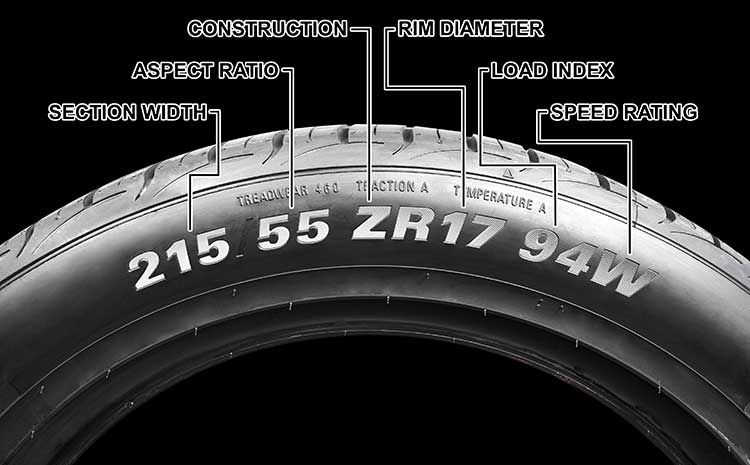Tread School: Choosing the Right Tires
Last updated November 2024

When Do I Need New Tires?
You need to replace your tires when they wear down to 1/16 inch of tread. They’ve reached this level when tire tread is even with the wear bars built into the tread. You can also measure the tread with a penny: Insert it Lincoln-head-first in a tread groove; if the treads don’t cover part of Abe’s head, they are too worn down.
You might want to replace your tires sooner to improve traction on wet roads. Having more tread means water will be carried away from a tire’s footprint on the road. (Shallower tread, up to a point, may actually improve traction and handling on dry roads, however.)
If you don’t drive often, you might need to replace your tires before their tread is worn. Tires dry out with time, reducing performance and safety. Many manufacturers recommend replacing tires after six years, no matter the tread wear.
Regardless of tread wear or age, replace a tire if you see a bulge or blister on the sidewall; and if you see cuts or cracking, have an expert inspect it.
Determining the Right Size
The placard/sticker pasted on your vehicle’s door edge, doorpost, glove box door, or fuel door indicates the correct size and type of tire; this info is also in your vehicle’s owner’s manual. Or you can obtain it from “tire finder” tools on tire manufacturers’ websites.
When shopping for tires, confirm that you’re getting the right size and type by checking tire sidewalls. The size appears on the sidewall as something like “P215/65R15”—the “P” indicates it is a passenger tire, “215” is the width in millimeters, “65” is the ratio of height to width (aspect ratio), “R” means that it’s a radial tire (as opposed to bias-ply or diagonal-bias), and “15” is the rim diameter in inches. Replacement tires should also match the placard with respect to load index and speed rating (for example, “95H”—see below for advice on speed ratings).

Evaluating Product Quality
In addition to getting the proper tires for your ride, you want tires that perform well. Below we discuss performance characteristics drivers care most about, plus notes on the available sources for ratings information.
Important note: Don’t assume a tire’s higher price tag means better quality. In Consumer Reports’ tests, several tires with top overall quality scores cost less than tires that received low scores.
Tread Wear
The U.S. Department of Transportation (DOT) requires tires to be rated on how many miles they can be expected to travel before their treads wear down. The tread-wear rating appears on the tire sidewall; it is calculated by manufacturers using standards and testing procedures specified in the DOT’s Uniform Tire Quality Grading (UTQG).
A tire’s tread-wear grade is a comparative rating determined during tests conducted under controlled conditions on a government test track. The ratings aren’t stated in miles, but rather in abstract numbers such as 200 or 400—and there is no way to translate these numbers to the actual mileage you get. Actual mileage depends on your driving habits, road characteristics, climate, and other factors. But tread-wear ratings are intended for comparisons: If a tire is graded 400, for example, that means it wore twice as long on the test track as a tire with a 200 rating.
Tread-wear ratings are reasonably good indicators of the life expectancy among different tire models from the same manufacturer. They’re also useful for comparing tires made by different manufacturers, but tend to be less accurate. The problem is that the testing is conducted only up to 7,200 miles, from which point manufacturers make their own projections—based on the wear observed during those 7,200 test miles—of how well the tread will hold up in subsequent miles. Translation: Some manufacturers are more conservative than others in their projections.
A more reliable source of tread-wear information for many (but far from all) tires is Consumer Reports, which for about 150 tire models regularly conducts its own tests for tread wear on the same test track used for DOT tests. But Consumer Reports tests cover much longer distances, and its projections of tread wear are made consistently across manufacturers.
Warranty
In addition to tread-wear ratings, the manufacturers’ advertised tread-wear warranties are a source of information. In general, a tire with an 80,000-mile warranty will last about twice as long as one with a 40,000-mile warranty—but know that many high-mileage warranties can act more as marketing hype than a sign of quality.
Unlike warranties for most big-ticket purchases, which promise to repair or replace defective items within a certain time period, tire warranties offer prorated compensation, e.g., a 50 percent credit if tires with a 100,000-mile warranty last only 50,000 miles. A tire with a warranty for more miles than it is likely to last does not expose the manufacturer to much risk of paying claims by customers who get less mileage. As a practical matter, manufacturers pay very few claims, often dismissing them by determining customers haven’t complied with all tire-care requirements, such as regular rotation and inflation pressure. Even if a manufacturer honors a claim, it typically offers partial credit toward its own replacement tires. Customers entitled to warranty credit often don’t bother to request it.
Traction and Handling
The government-required UTQG that appears on every tire’s sidewall indicates performance in stopping on wet pavement, as measured under controlled conditions on government asphalt and concrete test surfaces. From best to worst, the grades are AA, A, B, and C.
Although traction is a function of tread design as well as materials, the specific testing procedure used by the UTQG reveals most about the materials. The UTQG traction test does not evaluate braking on dry surfaces, cornering on dry surfaces, cornering on wet surfaces, or high-speed hydroplaning resistance—important aspects of safety. Even for what is tested, UTQG ratings are not as discriminating as you’d wish. Almost all tires on the market today are graded AA or A, and very few are graded B or C.
The testing periodically performed by Consumer Reports provides information on a wider range of issues—braking on dry, wet, and icy surfaces; snow traction; emergency handling; and ability to resist hydroplaning on standing water.
Internet seller Tire Rack also performs traction and handling tests of some models, typically comparing several manufacturers’ competing tire lines with one another. The results are reported using an aggregate scoring system for “real-world road ride” comparisons as well as reports on braking distances. The site’s editors and testers also report their own subjective experiences during testing, plus consumer ratings on several attributes, ranging from dry traction to tread wear.

Temperature Grade and Speed Rating
A tire’s UTQG temperature grade, shown on its sidewall, indicates how well it resists generating heat and dissipates heat when tested under controlled conditions. Tires that perform well can run at higher speeds without failing. From best to worst, the possible grades are A, B, and C.
The test used to calculate temperature grades is similar to the test for speed ratings, also shown on the sidewall. Speed ratings for passenger car tires are, in increasing order of performance, M, N, P, Q, R, S, T, U, H, V, W, Y, and Z. A speed rating of M, for example, means the tire can withstand the heat generated if the car is frequently driven at speeds of 81 mph. A rating of V means the tire can withstand the heat generated at speeds of 149 mph.
Car manufacturers often recommend tires with speed ratings far higher than you might expect. For example, the tire model placard for a 2024 Toyota Camry XLE recommends a speed rating of V. That doesn’t mean Toyota expects owners of its family sedans to drive routinely at 149 mph, but it does predict how well a tire will handle at lower speeds, and manufacturers want drivers of their cars to benefit from this tire performance.
Manufacture Date
As mentioned previously, because tires can degrade as they age, you’ll want to buy ones that were recently made. The DOT requires manufacturers to indicate the week and year the treads were manufactured on their sidewalls. Look for the letters “DOT” followed by a four-digit code: “1024,” for example, means the tire was manufactured during the 10th week of 2024. If a tire is more than a year old, don’t buy it.
Ride Comfort
You may also be interested in the comfort of the ride and the amount of noise tires generate. Consumer Reports tests and reports on both attributes; Tire Rack reports user ratings and comments on them.


